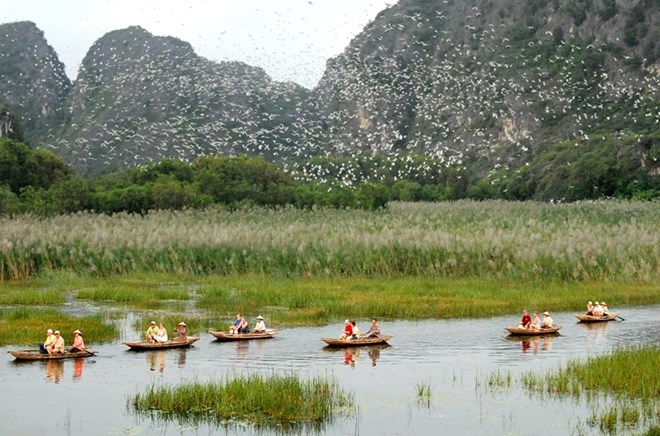The Van Long Wetland Nature Reserve in the northern province of Ninh Binh has been recognised as Viet Nam’s ninth Ramsar site.

After receiving its certificate of recognition at a ceremony on May 22, the reserve is now the 2,360th Ramsar site in the world. The recognition will help Viet Nam call for international support to research, conserve and sustain the wetland eco-system amid challenges from climate change.
Located on the northernmost tip of the Pu Luong-Cuc Phuong limestone mountain range, the area is one of the few intact lowland inland wetland areas remaining in the Red River Delta. It is centred on a block of limestone karst outcrops that rise from the flat coastal plain of northern Vietnam.
The freshwater lake, marshes and swamps that surround the karst, together with subterranean hydrological systems, form a wetland complex that is very rare in the region.
The limestone hills provide a habitat for the critically endangered Delacour’s langur, one of the world’s 25 most endangered primates. The reserve is home to more than half of the animal’s global population and the only place where the species can be observed in the wild.
It is also an important refuge and breeding ground for several aquatic species, and home to waterbirds.
The wetland offers important ecosystem services for the surrounding communities, including its aquatic and agricultural resources and its scenic beauty for recreation and ecotourism.
Ramsar, or the Convention of Wetlands, is an intergovernmental treaty that provides a framework for conservation and wise use of wetlands and their resources. It was adopted in the Iranian city of Ramsar in 1971 and came into force in 1975.